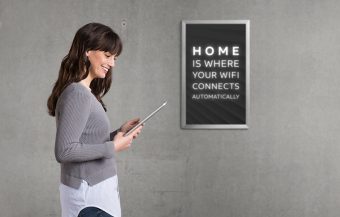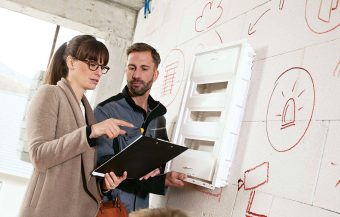
In today’s age, when the prices of energy products and electricity have reached their highest historical values, smart houses, apartments, and business premises are presented as an effective solution for bridging the energy crisis. These facilities, combined with renewable energy sources and other energy efficiency measures, ensure comfort and safety at all times and provide significant energy savings. Therefore, it is not surprising that the age of smart buildings has already arrived in our area.
Relying on the decades-long tradition of the KNX standard, the ABB Company has developed the ABB free@home system, which has been raising the quality of the everyday life of its users in Serbia for more than five years. Because this company operates in over 100 countries and its continuous commitment to the development and improvement of its own systems and equipment, in cooperation with reliable system integrators from the Pametan Stan Company (the Smart Apartment Company), users can be rest assured that they will enjoy the system’s performance for decades to come.
On the other hand, considering how expansive the offer of new buildings is, developers have to stand out in the market, and they can do that by choosing a smart home system that creates a significant advantage. For instance, the experience of ABB experts worldwide shows that implementing this system greatly expedites the sale of buildings that are branded as smart.
IN FOCUS:
- SUSTAINABLE ARCHITECTURE PRINCIPLES THROUGHOUT HISTORY AND TODAY
- HOW CAN WE HAVE A MORE SUSTAINABLE CONSTRUCTION SECTOR?
- BIOCLIMATIC ARCHITECTURE AS THE BASIS OF SUSTAINABLE CONSTRUCTION

The first smart building in Serbia, B2, was built in Terazije, in the heart of Belgrade, where a complete ABB home automation system, intercom system, and weather station for each apartment were installed and commissioned. Furthermore, preparations are being made for electric car chargers for each parking space in the facility. Other buildings that contain this system include the building of the Regional Air Traffic Control in Surčin and several luxury mansions. Royal Art Residence & SPA, an exclusive facility located at 21 Kosančićev Venac, known for bringing its Paris-like charm to the very centre of Belgrade, has apartments that are equipped with an ABB home automation system (smart home systems). In recent times, smart home systems have become common in mass residential construction, i.e., in buildings with hundreds of apartments. The solutions that the ABB Company provides are ready for any challenge that may occur, which was also recognized by the developers from Novi Dorćol. As a cross between authentic, traditional and modern architecture, the building in Novi Dorćol, spanning 16,800 square metres, has had 4,300 smart home devices installed in 225 apartments. Furthermore, 950 scenarios have been created, and six weather stations have been installed in the building to inform its tenants about the weather and warn them of dangerous situations. In the same urban architectural spirit, the ABB free@home system is integrated into the ZepTerra residential-business complex in Novi Beograd, built in accordance with state-of-the-art standards and energy efficiency requirements.
Comfortable, safe and economical side
The term smart is used by these home automation systems to describe their ability to act based on predefined parameters and rules entered by the installer or users themselves, according to their personal preferences and needs. These systems do not rely on artificial intelligence for autonomous decision-making, so users can rest assured that smart homes cannot take control of their lives. The ABB home automation system gives the user full control in managing the home in four ways. The classic management method implies that a smart home has switches and sockets that perform predefined functions. Electrical installations such as lighting, blinds, motorized awnings, heating and cooling, and household appliances are managed remotely via a mobile phone, tablet, or computer. Motion sensors and presence sensors allow, for example, the light to be turned on as long as someone stays in the room, and when someone leaves the room, the light turns off. The timer feature allows users to define functions that will activate or end at a specific time or last for a specific period.
ABB
Read the story in the new issue of the Energy portal Magazine SUSTAINABLE ARCHITECTURE AND FINANCING OF GREEN CONSTRUCTION



